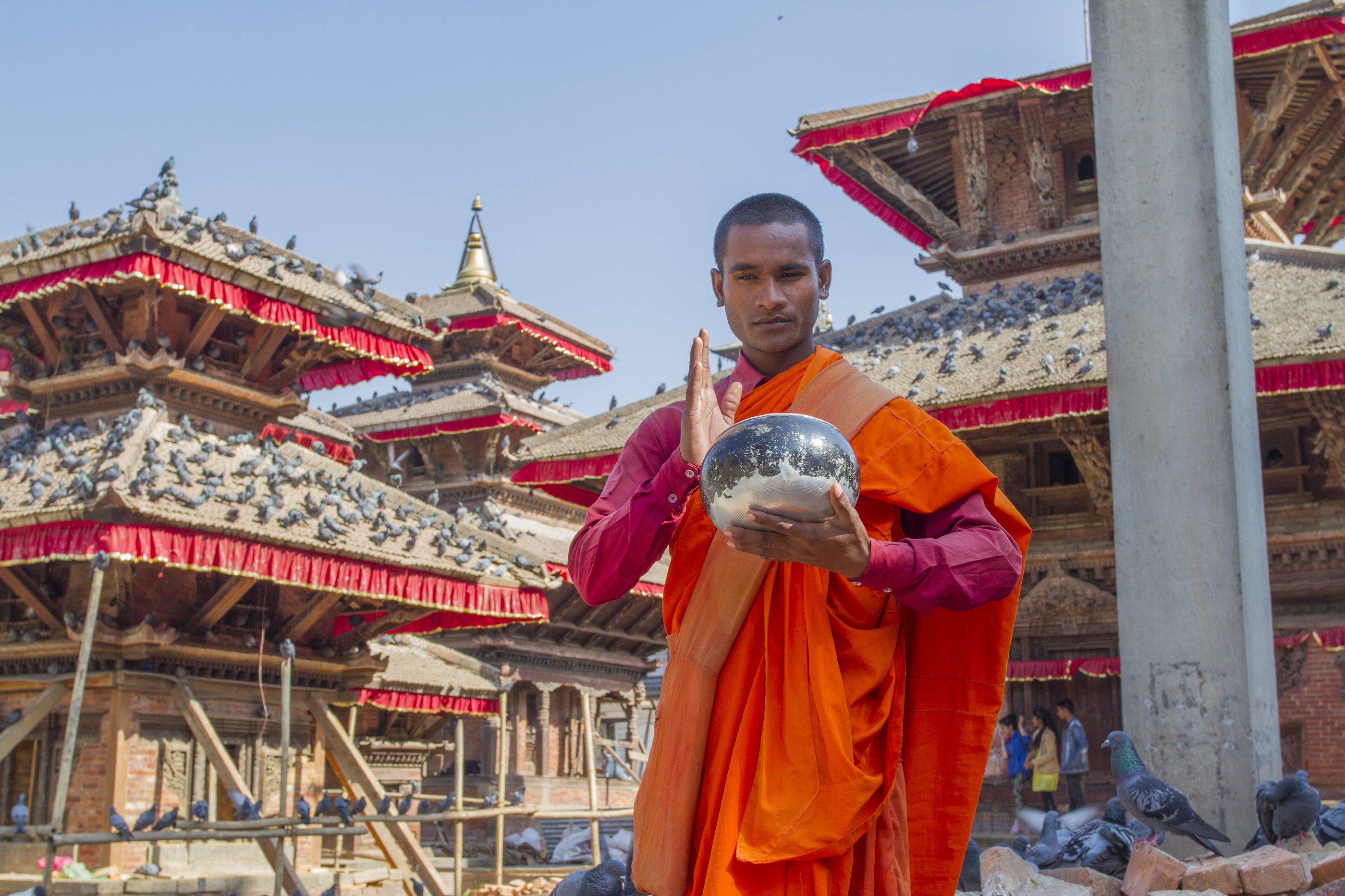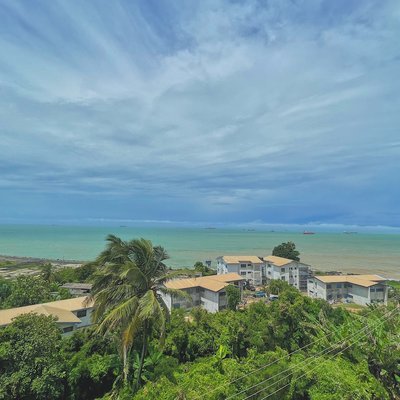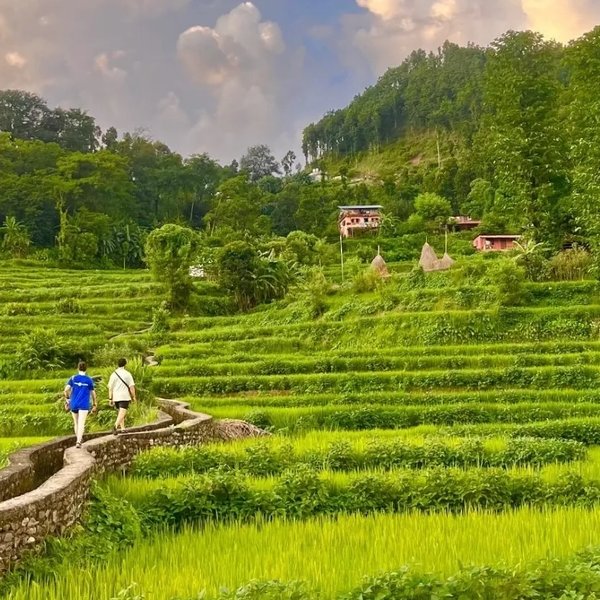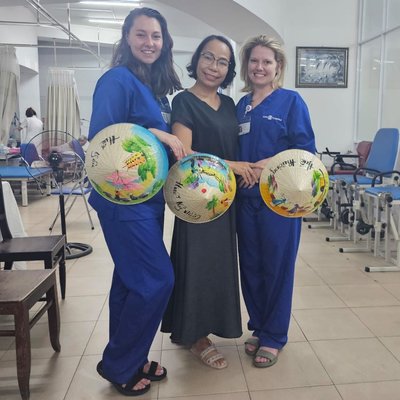University of Rhode Island 2015
Going to graduate school for physical therapy I knew I wanted to take advantage of any opportunity to travel and see physical therapy being practiced in a developing country; in a region of the world I had not seen before. A classmate in my program went on a World the World trip the previous year and highly recommended World the World because they made the whole process easy – especially for busy graduate students like us to don’t have time to plan trips!
She also applauded Work the World’s numerous phone calls before the trip, and the in-country support offered while on the placement. Additionally, I felt much more comfortable going to a developing country knowing that I would be staying in a house with other students and with staff to call whenever I needed help.
From an educational standpoint, I loved that it offered experience in a large teaching hospital, in a country in which physical therapy is a growing field.
When I saw the placement offered in Kathmandu, I knew I would get what I was looking for both in terms of healthcare and culture. From an educational standpoint, I loved that it offered experience in a large teaching hospital, in a country in which physical therapy is a growing field. Additionally, Nepal is incredibly interesting (and different from the US) politically as well as culturally and religiously (with lots of temples to visit!).
My friend was right – Work the World was incredibly organized, informative, and eager to help with every step of the planning process. They made it so easy – so while several of my classmates are spending hours planning their trips I was able to pack my bags and just go. This is good considering the workload I was carrying the semester beforehand!
When I finally landed in Kathmandu after a five-hour delayed flight (and no international phone with which to reach the staff in Kathmandu to inform them!), I was relieved to see Uma, the assistant program manager, and Krishna, the house caterer, smiling and waving at me as I exited the airport! I was also incredibly relieved to immediately sense the community feels back at the Work the World house – where some of the students who had been there for a week immediately invited me and the other new arrivals to go out to lunch with them and explore Kathmandu a bit. The orientation the next day made it really convenient to get the phone and money situation settled right away with help from Uma. She took us on walking tour through Kathmandu and we got to see several lesser-known temples that I wouldn’t have known about without her guidance.
The entire Work the World staff, from the caterers to the security guards, was always incredibly helpful and friendly. They went out of their way to make sure we were comfortable and that everything was going alright. Whenever there was something wrong with the facilities in the house it would be attended to quickly, and I always knew I would return to the house to smiling faces. The staff even helped arrange our weekend trips for us – from booking the airline tickets to the paragliding in Pokhara!
At the hospital, I was mentored by the chief physical therapist. In the morning we were in the outpatient department in which I saw patients with conditions such as DeQuervain syndrome, Bell’s palsy, adhesive capsulitis, acute and chronic neck and back pain, Cerebral palsy, and post-fracture management. There were some patients with neurological disorders but they were primarily treated by the other physiotherapists in the department. Many of the patients would come every day, so I had the opportunity to get to know them (and practice my Nepali!) and to see them as their treatment progressed. In the afternoons, I accompanied the Doctor on inpatient rounds in the hospital, where he administered lots of chest physiotherapy as well as guiding and instructing long-term patients in range of motion and strengthening exercises. Although the afternoons weren’t as patient care involved as the mornings, I had the opportunity to see lots of interesting cases, practice reading radiographs, and see first-hand the effectiveness of the chest physiotherapy I had learned about in my recent cardiopulmonary class. I loved that I got to see both inpatient and outpatient physiotherapy and such a variety of cases in this placement. The Doctor was incredibly patient and welcoming and was always quizzing me on my knowledge and always willing to answer any questions I had about the cases we saw and about physiotherapy and healthcare in Nepal.
I even had the opportunity to taste some freshly boiled cow’s milk and homemade butter – the best milk and butter I’ve ever had!
After two weeks in bustling Kathmandu, I couldn’t think of a better contrast than spending a week on the village experience in an agricultural community in the foothills of the Himalayas. It was on this experience that I felt that I got a better feeling for what life is like for most Nepalese people. The setting for the village experience was incredibly gorgeous, and we had plenty of time to explore the village and surrounding communities on our almost-daily hikes. Health care services in the village were minimal and physical therapy was not a service the population was familiar with. In large contrast to the teaching hospital in Kathmandu, the students I went with and I were seen as the “experts” in the healthcare post. Meanwhile, the homestay family was welcoming and friendly and our guide was eager to show us the unique opportunities the village stay offered – from watching the new arrival of two baby goats, to visiting a rural government school, to playing volleyball with the village youth group, to seeing how butter is made, to hiking to an obscure bat cave that also served as a Hindu temple! Everyone in the village was eager to interact with us “tourists” and some of my favorite nights were spent playing and practicing Nepali with the children in the village. Additionally, the food was delicious! The nightly curries and dal bhat were always freshly made from the family’s own crops and I even had the opportunity to taste some freshly boiled cow’s milk and homemade butter – the best milk and butter I’ve ever had!
Overall my experience in Kathmandu was just what I was looking for – a glimpse into an entirely different healthcare system as well as a unique and rich cultural experience. If you’re looking for a placement that will challenge you both professionally and culturally – and are willing to expand your horizons a bit – I feel Work the World has really mastered the combination of healthcare and cultural experience in one. I viewed the placement first and foremost as a learning experience – if you keep an open mind and try to avoid thinking of yourself as a volunteer who’s there to serve the population, but instead as a student who’s there to gain new perspectives and experiences, you’ll find that Work the World facilitates just that.









